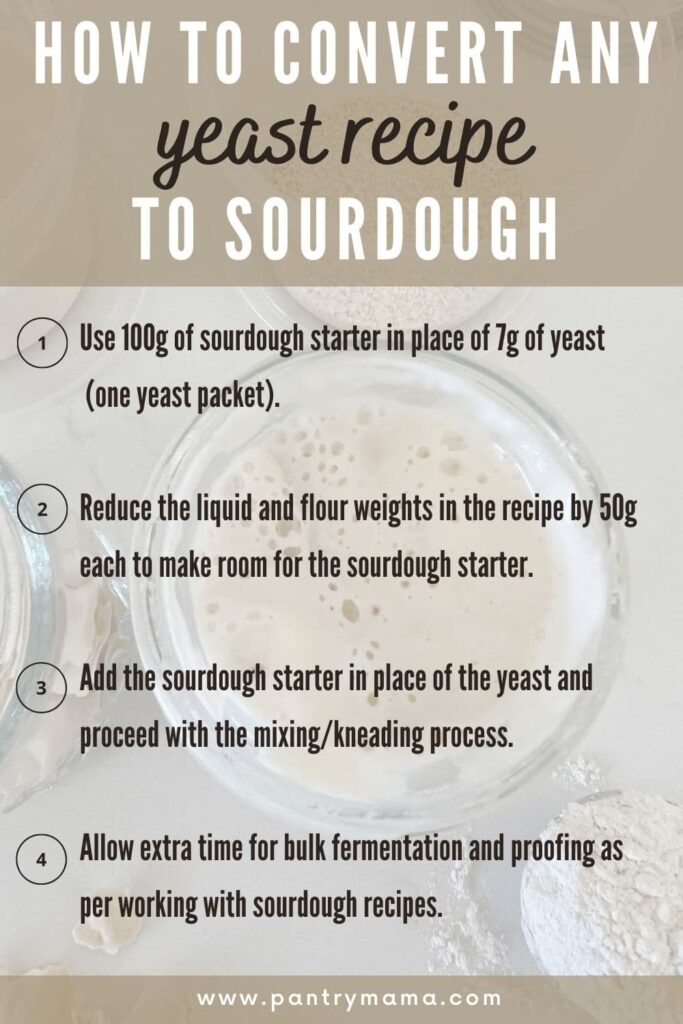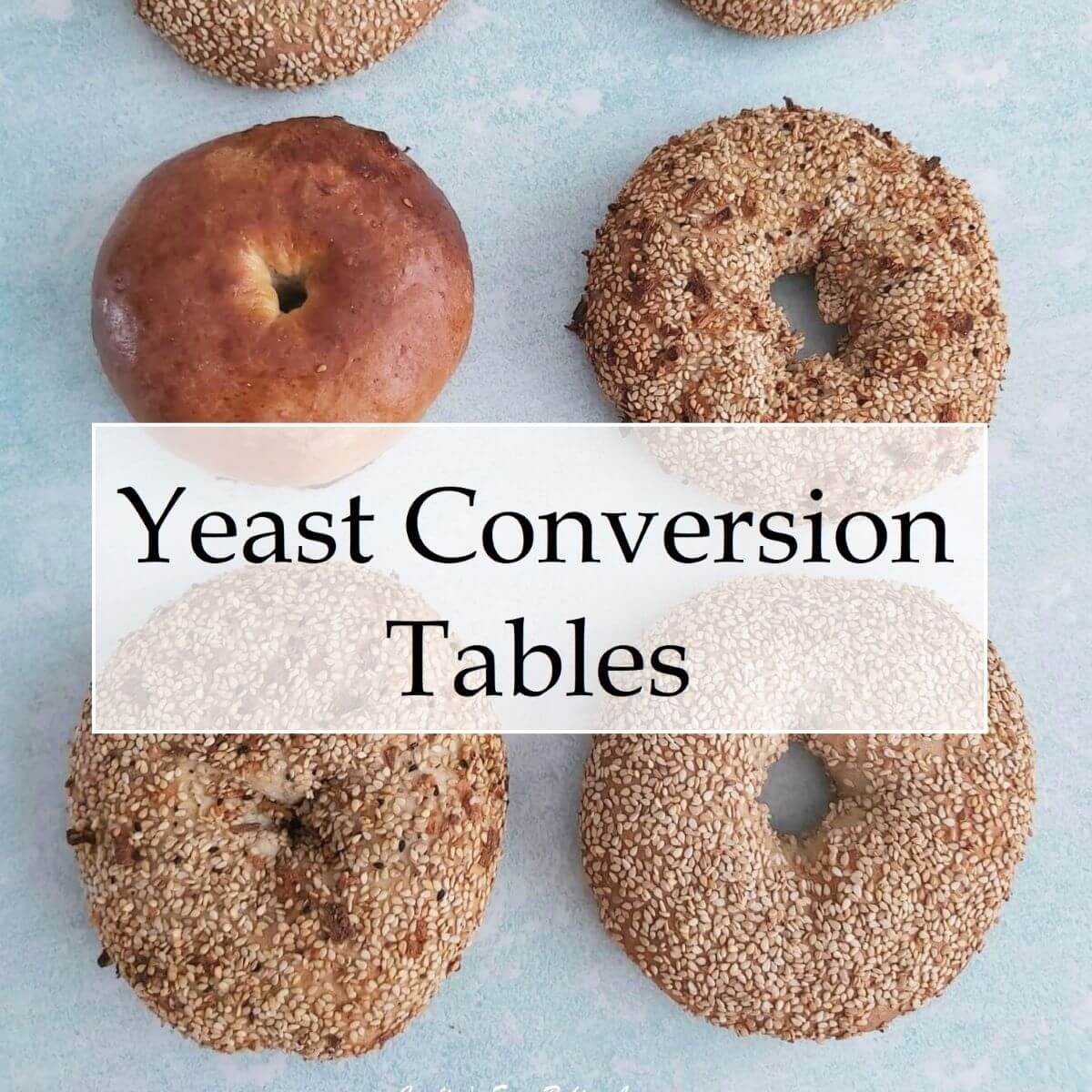Converting yeast measurements for various recipes can seem tricky. But it doesn’t have to be.
Baking different recipes often calls for different types of yeast. Understanding how to convert these measurements is important for successful baking. Whether you’re using active dry yeast, instant yeast, or fresh yeast, knowing the right conversion can make all the difference.
In this guide, we’ll break down the process into simple steps. You’ll learn how to convert yeast measurements easily and accurately. This will help you bake with confidence, no matter what the recipe calls for. So, let’s dive in and make baking a breeze!
Introduction To Yeast Measurements
Hey friends, today we’re diving into something really important for all you bakers out there – yeast measurements. If you’ve ever baked bread or any other yeast-based recipe, you know that getting the yeast measurement right is crucial. It can mean the difference between a fluffy loaf and a dense brick. So, let’s break it down together in an easy-to-understand way.
Importance Of Accurate Measurement
Why is accuracy so important? Think about it like this – yeast is a living organism. It needs just the right amount of water, warmth, and food (like sugar) to thrive. Too much or too little can affect how your dough rises, and ultimately, how your baked goods taste and feel.
Consider this: You wouldn’t use a random amount of flour or sugar in a recipe, right? The same goes for yeast. Measuring correctly ensures consistency and quality in your baking.
- It helps the dough rise properly.
- Ensures a consistent texture and flavor.
- Prevents under or over-proofing.
Common Types Of Yeast
There are a few common types of yeast that you’ll come across in recipes. Each one behaves a bit differently, so it’s good to know the basics.
| Type of Yeast | Characteristics |
|---|---|
| Active Dry Yeast | Must be dissolved in water before using. Takes longer to rise. |
| Instant Yeast | Can be mixed directly with dry ingredients. Rises faster. |
| Fresh Yeast | Also known as cake yeast. Has a short shelf life and needs refrigeration. |
Each type of yeast has its own conversion rate. For example, if a recipe calls for 1 teaspoon of active dry yeast, you can use about 3/4 teaspoon of instant yeast instead.
When I first started baking, I was confused about these differences. But a little practice and some quick conversions made it much easier. Now, I can swap them out without thinking twice.
Remember, baking is both an art and a science. Getting your yeast measurements right can make your baking experience much more enjoyable. Happy baking!
Understanding Yeast Measurement Units
Understanding yeast measurement units is crucial for successful baking. Different recipes use different units. Knowing how to convert them ensures perfect results. Let’s explore the common yeast measurement units.
Teaspoons And Tablespoons
Many recipes measure yeast in teaspoons and tablespoons. These units are common in the United States. One tablespoon equals three teaspoons. This conversion is helpful for scaling recipes. For example, if a recipe calls for one tablespoon, you can use three teaspoons instead.
Use standard measuring spoons for accuracy. Don’t confuse teaspoons with tablespoons. This mistake can affect your recipe’s outcome. Always level off the yeast for precise measurements.
Grams And Ounces
Other recipes measure yeast in grams and ounces. These units are common in many countries. One ounce equals 28.35 grams. This conversion helps when using international recipes. For instance, if a recipe calls for 10 grams, this equals about 0.35 ounces.
A kitchen scale is useful for these measurements. It provides accuracy and consistency. Weighing yeast ensures you follow the recipe correctly. Remember, even small differences can impact your baking.
Converting Between Measurement Units
Converting yeast measurements can be confusing. Especially for different recipes. Understanding how to convert between units is essential. This helps you get the desired results in baking.
Volume To Weight Conversion
Yeast is often measured in teaspoons or tablespoons. But, recipes from different regions use grams or ounces. To convert volume to weight, you need a scale. One teaspoon of yeast is about 3.1 grams. A tablespoon is around 9.3 grams. Use a kitchen scale for precise measurements. This ensures consistency in your baking.
Weight To Volume Conversion
Sometimes, you have a recipe with weight measurements. But, you only have measuring spoons. To convert weight to volume, use the same ratios. Divide the grams by 3.1 to find teaspoons. Divide by 9.3 to get tablespoons. This helps you follow recipes accurately. Ensuring the best results in your baked goods.

Credit: www.facebook.com
Adjusting For Different Yeast Types
Hey friends, ever felt confused about yeast measurements? Well, you’re not alone! Different recipes call for different types of yeast. But don’t worry. We’ll break it down into simple steps. Let’s dive into how to adjust for different yeast types.
Active Dry Yeast Vs Instant Yeast
Active Dry Yeast and Instant Yeast are the most commonly used types. But they aren’t the same. Here’s a quick comparison:
| Type | Characteristics | Conversion |
|---|---|---|
| Active Dry Yeast | Needs to be dissolved in water before use. | 1 tsp Active Dry Yeast = 3/4 tsp Instant Yeast |
| Instant Yeast | Can be mixed directly with dry ingredients. | 3/4 tsp Instant Yeast = 1 tsp Active Dry Yeast |
See how easy that is? Just remember: Instant yeast is slightly more powerful. So you need less of it. I once made a pizza dough and used the wrong amount of yeast. Trust me, it was a learning experience!
Fresh Yeast Vs Dry Yeast
Fresh Yeast, also known as cake yeast, is different from dry yeast. It’s moist and crumbly. Let’s see how they compare:
- Fresh Yeast: Comes in a block. Needs to be refrigerated.
- Dry Yeast: Comes in granules or fine powder. Has a longer shelf life.
When converting between fresh yeast and dry yeast:
- 1 ounce Fresh Yeast = 2 1/4 tsp Active Dry Yeast
- 1 ounce Fresh Yeast = 1 3/4 tsp Instant Yeast
Simple, right? Fresh yeast is more delicate. So, it’s used in recipes where the yeast flavor is important. For example, in some traditional bread recipes.
Now you know how to adjust for different yeast types. Next time you’re baking, you can confidently substitute one type for another. Happy baking!
Using Yeast Conversion Charts
Converting yeast measurements between recipes can be tricky. Using yeast conversion charts makes this task much easier. These charts help you match different yeast types and amounts. They ensure your bread rises perfectly. Let’s explore how to read these charts and see some practical examples.
Reading Conversion Charts
Yeast conversion charts are user-friendly tools. They list different yeast types side by side. Each column shows equivalent amounts. For example, active dry yeast, instant yeast, and fresh yeast will be compared. By checking the chart, you can swap one type of yeast for another. The measurements are precise. This accuracy helps you avoid baking mishaps.
Start by identifying the yeast type your recipe calls for. Look for it in the chart. Find its equivalent in the yeast type you have. Follow the chart’s measurements for best results. Pay attention to any notes or tips on the chart. They offer extra guidance for perfect conversions.
Practical Examples
Let’s see some practical examples. Suppose your recipe needs 1 teaspoon of active dry yeast. You only have instant yeast. The chart shows you need 3/4 teaspoon of instant yeast. This small adjustment makes a big difference. Your dough will rise as intended.
Another example: Your recipe calls for 25 grams of fresh yeast. You prefer using active dry yeast. The chart indicates you need 1 tablespoon of active dry yeast. Again, this ensures your bread turns out perfect.
Yeast conversion charts are essential for bakers. They simplify the process of swapping yeast types. Follow the charts closely. Enjoy consistent, delicious baked goods every time.
Tips For Accurate Yeast Measurement
Accurate yeast measurement ensures your baked goods rise perfectly. Small errors can affect the outcome. Here are some tips to measure yeast correctly. These methods will help you achieve consistent results in your baking.
Using A Kitchen Scale
A kitchen scale is precise. It eliminates guesswork. Weigh your yeast to get the exact amount your recipe needs. Digital scales are best. They measure in grams and ounces. Place a small bowl on the scale. Zero it out. Add the yeast until you reach the required weight.
Measuring Spoons And Cups
Measuring spoons and cups are common tools. They are simple and easy to use. Use the right spoon size. Level it off with a knife. Do not heap the spoon. For liquid yeast, use a measuring cup. Make sure to check the measurement at eye level. This ensures accuracy.
Common Mistakes To Avoid
Converting yeast measurements can be tricky. Many people make common mistakes. These errors can affect your recipe. Let’s explore some common pitfalls to avoid.
Overestimating Yeast Amount
Using too much yeast is a common mistake. It can cause your dough to rise too fast. This can lead to a poor texture. Always measure yeast carefully. Use a kitchen scale for accuracy. Check the recipe’s yeast amount. Do not guess or eyeball it.
Ignoring Yeast Type Differences
Different recipes use different yeast types. Active dry yeast and instant yeast are not the same. They work differently in recipes. Instant yeast needs no proofing. Active dry yeast needs dissolving in water first. Know the type your recipe calls for. Substitute correctly if needed. Follow the instructions for the specific yeast type.

Credit: www.pantrymama.com

Credit: www.easyonlinebakinglessons.com
Frequently Asked Questions
What Is One Package Of Active Dry Yeast Equivalent To Instant Yeast?
One package of active dry yeast is equivalent to one package of instant yeast. Both typically contain 2 1/4 teaspoons.
What Calculations Can You Do To Substitute One Type Of Yeast For Another?
To substitute dry yeast for fresh yeast, use 1/3 the amount. For instant yeast, use 3/4 the amount of active dry yeast.
How Much Dry Yeast Is Equivalent To Fresh Yeast?
Use one-third the amount of dry yeast as fresh yeast. For example, 10 grams of fresh yeast equals about 3. 3 grams of dry yeast.
How Do You Convert 2 Teaspoons Of Active Dry Yeast To Instant Yeast?
Use 1. 5 teaspoons of instant yeast to replace 2 teaspoons of active dry yeast. Adjust your recipe accordingly.
Conclusion
Converting yeast measurements can seem tricky. But with practice, it gets easier. Always check your recipe carefully. Use the right type of yeast. Measure accurately for the best results. Understanding these basics helps your baking. Your bread will rise perfectly.
Enjoy delicious homemade treats. Happy baking!
